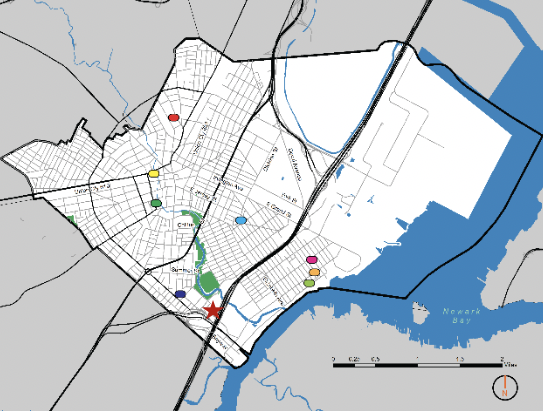Heatwave Resilience Case Study
Housing Authority of the City of ElizabethThis case study draws upon National Science Foundation funded research at the Rutgers Center for Green Building, which assessed heat wave impacts on air quality and how public housing residents cope with heatwaves.[1] Three HACE sites in Elizabeth, NJ served as study sites: Mravlag Manor (Site M), Ford Leonard Towers (Site F), and 205 First Street (Site L).
Fig 1 – Map of Elizabeth, NJ.
Why is it important?
Health and comfort challenges presented by poor air quality are exacerbated by heatwaves, which are increasing in severity and duration.[2] While it is difficult to take local actions that substantively impact outdoor air quality, property managers and tenants can take actions that improve indoor air quality. This is important because the average person spends more than 90% of his/her time indoors.[3] Additionally, property managers can pursue strategies to improve outdoor environmental quality in the immediate vicinity of the property (e.g., provision of shade) and encourage tenant use of outdoor amenities. Depending on location, and time of day, outdoor air quality is better than indoor air quality.
For whom is this useful?
The original research focused on vulnerable urban seniors living in public housing, although its findings are broadly useful, especially for vulnerable populations. Developers, property owners, design professionals, public agencies and communities all stand to benefit their constituencies by adopting strategies for increasing heatwave resilience.
Summary of location: Elizabeth, NJ
The City of Elizabeth is the fourth largest city in New Jersey and the largest city in Union County. It covers a total of 13.5 square miles and contains one of the largest and busiest ports in the world. Within Elizabeth, HACE manages 1,322 public housing units.
The City of Elizabeth is home to significant sources of pollution such as the Bayway Refinery, part of the Chemical Coast (a stretch of municipalities that produce most of the region’s oil products), the I-95 corridor, Port Elizabeth Marine Terminal, one of the largest ports in the country, and shares the Newark Liberty International Airport with the City of Newark. Based on an analysis by the National Toxics Assessment, air quality in Elizabeth was given a score of 25 out of 100.
Physical Characteristics of the Study Sites

Fig 2 – Study Site M and its Surroundings ((NJGIN), 2016; Maps, 2017)
- 421 Units in 15 three-story walk-ups
- New roofs, fire escapes, heaters + bathrooms
- On-site community room and event space
- Social + financial support services

Fig 3 – Study Site F and its Surroundings ((NJGIN), 2016; Maps, 2017).
- 121 Units
- 11-stories (1 building)
- Extensive upgrades
- Community Space
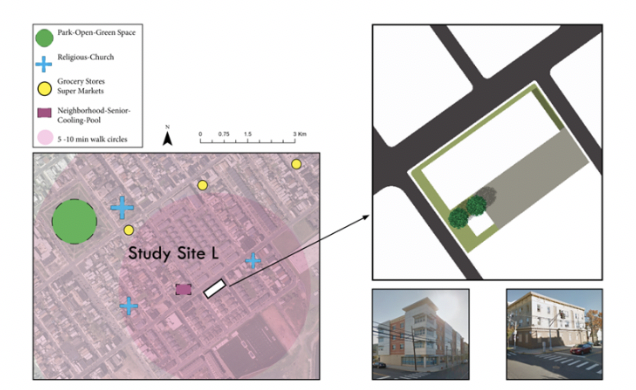
Fig 4 – Study Site L and its Surroundings (NJGIN), 2016; Maps, 2017).
- 30 Senior-only units
- Newest HACE property
- LEED Gold
- All units have access to central air
Study Design
- 24 households in 3 Housing Authority of the City of Elizabeth (HACE) sites
- Baseline interviews on social economic status, health, coping strategies, etc.
- Follow-up interviews; especially during heatwaves
- Continuous outdoor measurements using sensors
- Continuous indoor measurements (24 apts.) using sensors
- Empty apartment: continuous measurements using sensors
- Study timeframe: July 1 – September 30
Findings
The study investigated the architecture and technology of the buildings, the outdoor environment, and building occupant (tenant) behavior, with a strong focus on primary-source data including a system of indoor and outdoor sensors as well as structured interviews with building occupants.
Heat Waves & Air Quality
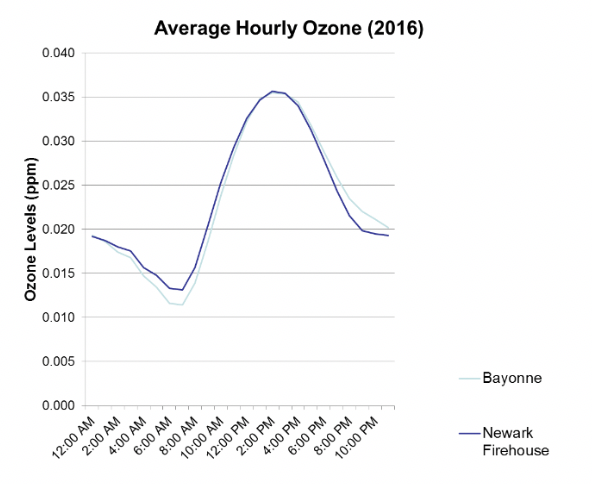
Fig 5 – Average Hourly Ozone Levels in Newark and Bayonne
- Ground-level ozone levels vary significantly throughout the day
- High temperature associated with higher levels of ozone
- Ozone, PM2.5, PM10, CO2 + high temperature have negative effects on health.
Adaptive Actions by Study Site
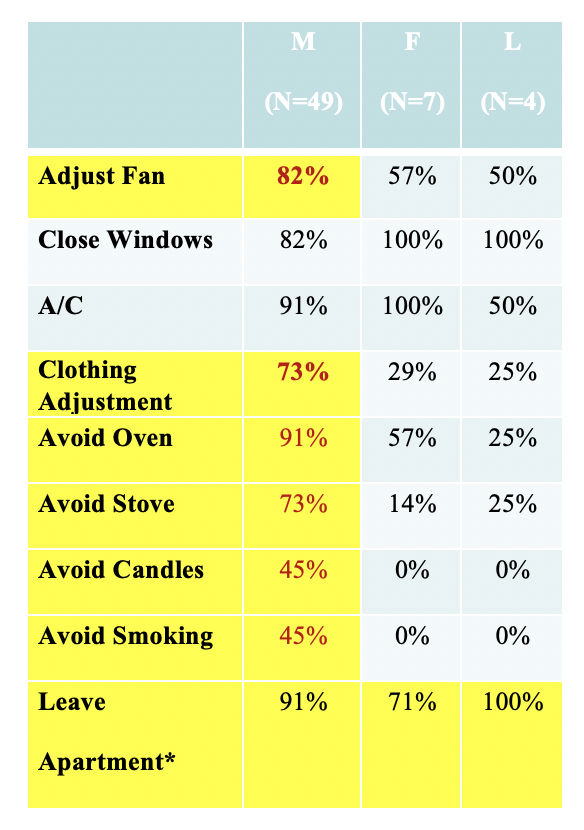
Fig 6 – Baseline Interviews vs. Actual Heat Waves Summer 2017
*Not necessarily in search for a cooler place (only 5% left in search of a cooler place)
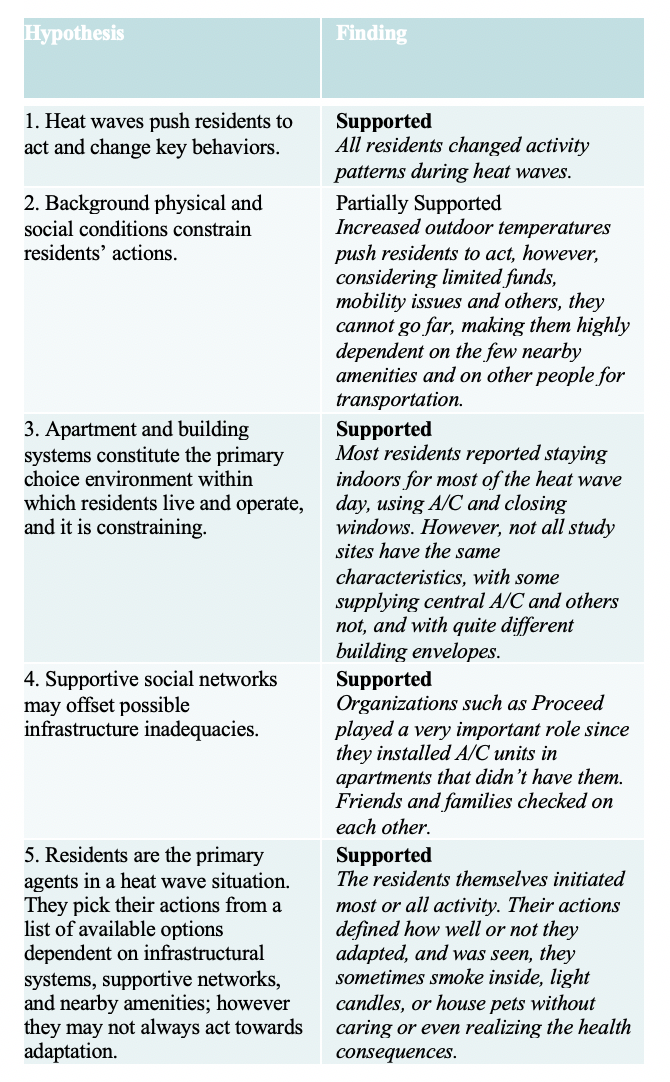
Fig 7- Study Hypothesis and Findings
Green Building Strategies to Mitigate Heatwave Impact
Outdoor Shade Spaces
Aging adults and people with chronic illness are at particular risk of heat stroke, dehydration and dangerous fainting spells. This is exacerbated by the fact that some people living in public housing do not have access to central air conditioning (AC) or cannot afford to run window AC units. Property owners can encourage these populations to walk the outdoor premises by providing amenities that accommodate such activity.
While the grounds of apartment complexes often include outdoor common spaces, they do not always have shaded areas and aging adults, who are susceptible to heatstroke, may not be able to take advantage of unshaded outdoor spaces. Owners may consider planting trees on property grounds as the presence of trees will contribute to improved air quality. Trees absorb pollutants and also help reduce the urban heat island effect by cooling the immediate environment through evapotranspiration and can reduce the need the demand for air conditioning in nearby buildings.[4] Heat island effect takes place when built up or densely developed areas experience an increase in temperature due to large areas of dark surfaces (i.e., pavement, roofs, etc.) that absorb heat from the sun. Rising temperatures result in increased energy demands, which can lead to higher air conditioning costs, increased greenhouse gas emissions, pollution, and increased risk of heat-related illnesses.[5] If planting trees is not feasible, owners can still incorporate planted areas, install canopies or umbrellas and provide seating to accommodate outdoor activities. Consider multipurpose components such as photovoltaic panels or vegetated roofs on structural canopies. High reflectance or “cool” paving stays cooler in the sun than darker paving. Consider using light-colored and reflective-colored pavers an alternative to asphalt and other dark materials for outdoor spaces.[6] Water features can also help cool the microclimate of an outdoor space.[7]
To help signal to tenants the appropriate times for outdoor seating or recreation, as well as opportunities to exchange air in the apartment via window opening, property owners can implement a visual outdoor air quality monitoring and warning system. The US EPA has an ‘Air Now’ online tool (www.airnow.gov) that lists air quality conditions by zip codes.[8] A highly visible flag system that correlates to a scale of air quality on site can help provide information about current air quality.
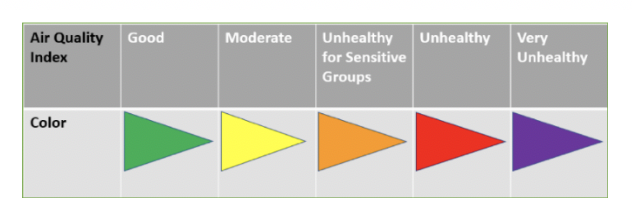
Fig 8 – Air Quality Index (Source: US EPA).
Vegetated Roofs
A vegetated roof, or green roof, is a system of lightweight growing media and plants that can be installed on most new or existing roofs with the input of a structural engineer. Vegetated roofs can improve air quality, reduce the urban heat island effect, manage stormwater and reduce the need for heating and cooling within the building. Accessible green roofs can also provide opportunities for producing food as well as providing additional outdoor space and wildlife habitat.[9]
For example, vegetated roofs serve as a carbon sink, helping to offset carbon emissions. Vegetation traps dust and particulate matter as well as other contaminants such as nitrogen oxides.[10] The multiple layers of a vegetated roof provide insulation. By increasing a building’s thermal mass, vegetated roofs can help keep temperatures cool in hot weather and warmer during the heating season translating into less energy spent on climate control for the building.[11] In the event of a power outage, common during heatwaves, vegetated roofs can help keep temperatures cool in the hot weather.
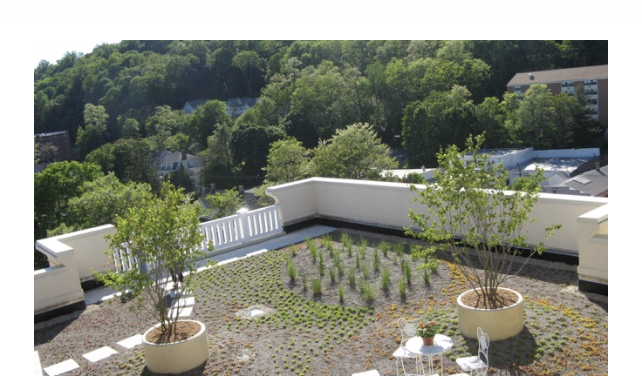
Figure 9 – The Geraldine R. Dodge Foundation headquarters green roof in Morristown, NJ (Source: Wild New Jersey).
Cool Roofs
Cool roofs, typically white, light-colored or reflective-colored roofs, reflect and radiate heat away from the building and are “cooler,” or have higher levels of reflectance and emissivity, than dark roofs. Many building codes and green building programs have a cool roof and urban heat island mitigation requirements that refer to ENERGY STAR and the Cool Roof Rating Council (CRRC) voluntary labeling programs. Cool roofs and proper insulation levels can reduce heating and cooling loads, reducing stress on the grid, and help to regulate thermal comfort during a power outage. [12]
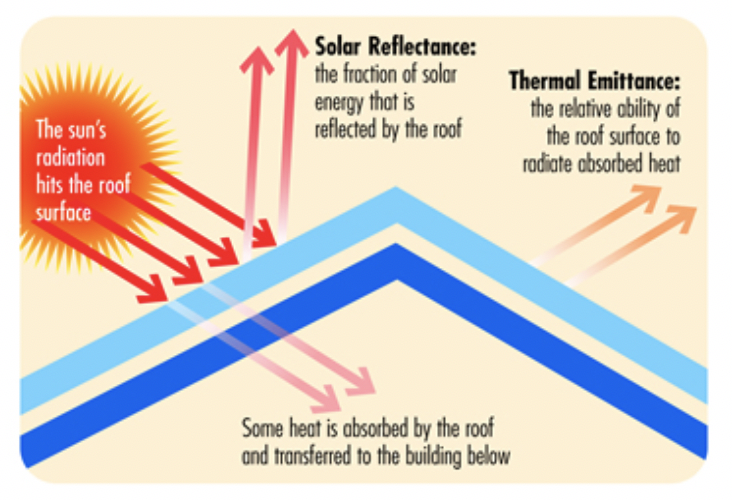
Figure 10 – Reflectance and Emittance of Roofs (Source: Cool Roof Rating Council)
Energy-Efficient Landscaping
The careful selection and placement of trees, shrubs and other vegetation can help reduce a building’s cooling needs. For example, planting trees on the southside of the building can minimize summer solar heat gain. During a heat-wave, shade-providing trees help mitigate the urban heat island effect, reduce indoor cooling loads, and reduce stress on the power grid.[13]
Smart Metering
Smart meters or advanced meters, a component of the broader smart grid, [14] use digital meters to record and transmit energy consumption and generation data, namely electricity, but also natural gas or water usage in intervals of an hour or less through secure wireless network back to the utility and consumer at least daily. [15] As opposed to traditional analog or automated meter readers, smart meter technology includes remote reading, two-way communication, support for dynamic pricing,[16] and remote disablement and enablement of supply.[17] Smart meters provide documentation for participation in utility-sponsored demand response programs, which incentivize property owners and managers to interrupt or adjust energy use by reducing or shifting loads or storing energy during peak demand and periods of higher energy costs or enable utilities to remotely switch electricity services on or off based on the cost or availability of energy.[18] For example, consumption data from smart meters can signal a utility or consumer to remotely turn off air-conditioning units to avoid peak load issues or to run appliances during lower demand, lower-cost times of the day. Smart metered buildings with on-site renewable energy generation (e.g., photovoltaic systems) and energy storage (e.g., thermal storage, battery storage, fuel cells) can signal consumers to use renewable electricity when available, store excess when not needed or sell excess electricity to the grid. Smart metering and participating in demand response programs can help reduce water and energy costs and prevent peak demand-related grid-outages.
Smart meters increase heatwave resiliency by supporting the smart grid, which aims to diversify and strengthen the electric grid through better energy management and the integration of cleaner energy sources such as wind and solar as well as electric vehicle charging. During heatwaves or power outages, smart meters help accelerate service restoration by identifying problem areas and efficiently sending work crews, thereby reducing repair costs and total outage times and limiting business closures, health and safety hazards, food spoilage, and inconvenience from schedule disruptions. [19]
Heatwave Prevention and Preparation: Energy Storage and Back-up Power
In the last 20 years, an increase in the frequency and the intensity of extreme weather events, such as major hurricanes, heatwaves, thunderstorms, and ice storms in New Jersey and the associated costs of storm-related power outages, highlights the need for resilient energy systems that provide backup power in the event of a grid failure.[20]
Historically, generators fueled by fossil fuels, such as diesel or natural gas, provide backup power in the event of a power outage or natural disaster. In New Jersey, Hurricane Sandy exposed the vulnerability of generators, as the storm disrupted access to fuel and competing fuel demands from the transportation sector quickly depleted local fuel reserves.[21]
Energy storage refers to storing energy (e.g., batteries, thermal storage) for later use when it is needed, such as during a heatwave and power outage, or storing low priced energy and using that energy during peak demand, such as increased air conditioning usage during a heatwave, when prices climb.[22]
Backup power refers to supporting critical building functions by utilizing stored electrical or thermal energy (energy storage), power from on-site power generation with islanding capabilities, or power from local microgrids and distributed energy generators.
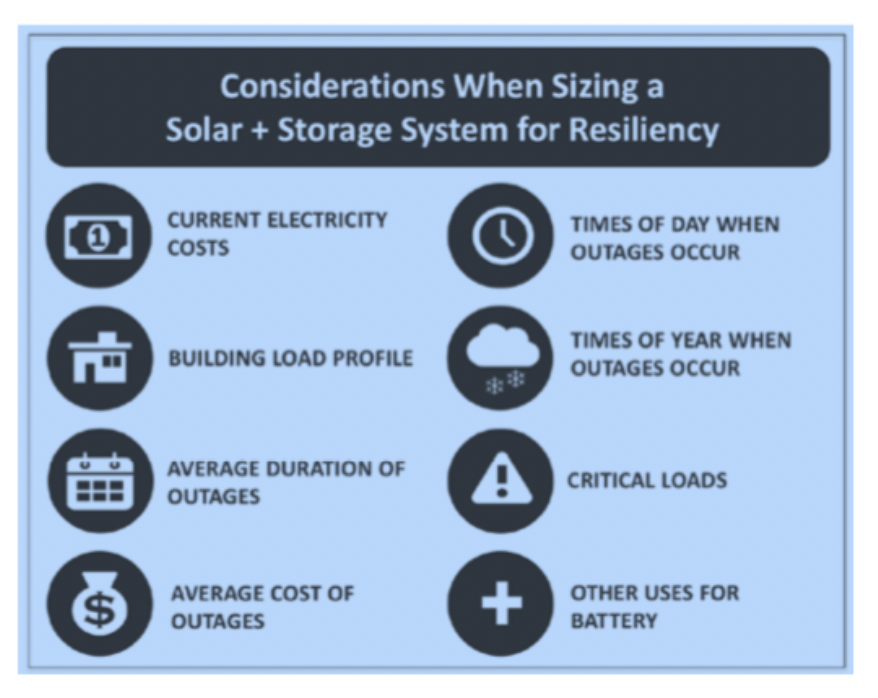
Fig 11 – Storage and Backup Power Considerations (Source: NREL)
Property owners and managers may consider supplementing or replacing traditional standby generators with the following technologies to provide backup power in the event of a power outage or heatwave:
- Islandable Photovoltaics (PV) systems with battery storage.
- Combined Heat and Power (CHP) systems with or without energy storage.
- Fuel Cells and hydrogen storage.
- Vehicle-to-Grid (V2G) Technology and battery storage.
Energy storage and backup power generation support heatwave prevention and preparation in many ways. Backup power generation systems that utilize energy storage or islanding and microgrid ready capabilities can operate independently from the grid during outages or at times of system peak and increase grid reliability by managing system outages and peak demand. Separation from the electricity grid also offers protection from security threats. Energy storage and backup power generation allow customers to take full advantage of demand response programs that signal when to use, store, or sell energy back to the grid and encourage electric vehicle charging during off-peak, low-cost hours or charging back to the grid during periods of peak demand. Likewise, energy storage and on-site backup power help to support the development of the broader smart grid by providing a local, distributed energy resource and helping to manage the integration of clean and renewable energy to the grid.
This project was funded in part through National Science Foundation (NSF) Grant AGS-1645786. Materials for this case study are drawn from Andrews, Clint, et al. 2018. Managing Heatwaves in Affordable Housing. 2018 APA National Planning Conference, Rutgers Environmental Planning Studio. Final Report. Spring 2017. Don’t Sweat It: Heat Waves & Air Quality in Elizabeth, NJ, and NJ Green Building Manual Strategies.
[1] Andrews, Clint, et al. 2018. Managing Heatwaves in Affordable Housing. 2018 APA National Planning Conference, Rutgers Environmental Planning Studio. Final Report. Spring 2017. Don’t Sweat It: Heat Waves & Air Quality in Elizabeth, NJ, and NJ Green Building Manual Strategies.
[2] Andrews, Clint, et al. 2018. Managing Heatwaves in Affordable Housing. 2018 APA National Planning Conference.
[3] Klepes, Neil, et al. 2001. The National Human Activity Pattern Survey (NHAPS): A Resource for Assessing Exposure to Environmental Pollutants. Lawrence Berkeley National Laboratory (accessed March 15, 2019).
[4] Heisler, Gordon M. and David J. Novak. National Recreation and Park Association. 2010. (accessed December 5, 2018).
[5] Solecki, William D. et al., Urban Heat Island and Climate Change: An Assessment of Interacting and Possible Adaptations in the Camden, New Jersey Region, New Jersey Department of Environmental Protection, Division of Science, Research, and Technology (2004). (accessed March 16, 2018).
[6] Rutgers Center for Green Building. NJ Green Building Manual. High Reflectance Hardscape Materials.
[7] De Joanna, Paola. International Conference on Civil, Architecture and Sustainable Development. The Water for Climate Comfort in Architecture. 2016. (accessed December 5, 2018).
[8] US EPA. AirNow. (accessed December 12, 2018).
[9] Rutgers Center for Green Building. NJ Green Building Manual. Vegetated Roofs.
[10] Oberndorfer, Erica et. al. 2007. Green Roofs as Urban Ecosystems: Ecological Structures, Functions, and Services. Biosciencemag.org 57, no. 10. (accessed March 25, 2018).
[11] James Hoff. “Reducing Peak Energy Demand: A Hidden Benefit of Cool Roofs.” TEGNOS Research. (accessed March 25, 2018).
[12] Rutgers Center for Green building. NJ Green Building Manual. Cool Roofs.
[13] Rutgers Center for Green Building. NJ Green Building Manual. Energy-efficient Landscaping.
[14] Smart grids are electricity supply networks that use digital communications technology to detect and react to changes in energy supply and demand and manage the transport of electricity from generation sources to end users.
[15] U.S. Energy Information Administration (EIA). 2017. Frequently Asked Questions: Smart Meters. Updated December 7, 2017. (accessed Sept 5, 2018).
[16] Dynamic pricing includes time-of-use pricing, real-time pricing, variable peak pricing, critical peak pricing, and critical or peak time rebates.
[17] Connected Devices Alliance. 2018. “Intelligent Efficiency – A Case Study of Barriers and Solutions – Smart Homes.” March 2018.
[18] Connected Devices Alliance. 2018. “Intelligent Efficiency – A Case Study of Barriers and Solutions – Smart Homes.” March 2018.
[19] DOE. “Smart Grid Investments Improve Grid Reliability, Resilience, and Storm Responses.” (accessed May 1, 2018).
[20] New Jersey Climate Adaptation Alliance, Understanding New Jersey’s Vulnerability to Climate Change.
[21] E. Hotchkiss, I. Metzger, J. Salasovich, and P. Schwabe. 2013. Alternative Energy Generation Opportunities in Critical Infrastructure New Jersey. Produced under the direction of the U.S. Federal Emergency Management Agency by the National Renewable Energy Laboratory (NREL) (accessed Oct 3, 2018).
[22] Energy Storage Association. 2018. Distribute Grid-Connected PV Integration (accessed Oct 18, 2018).

